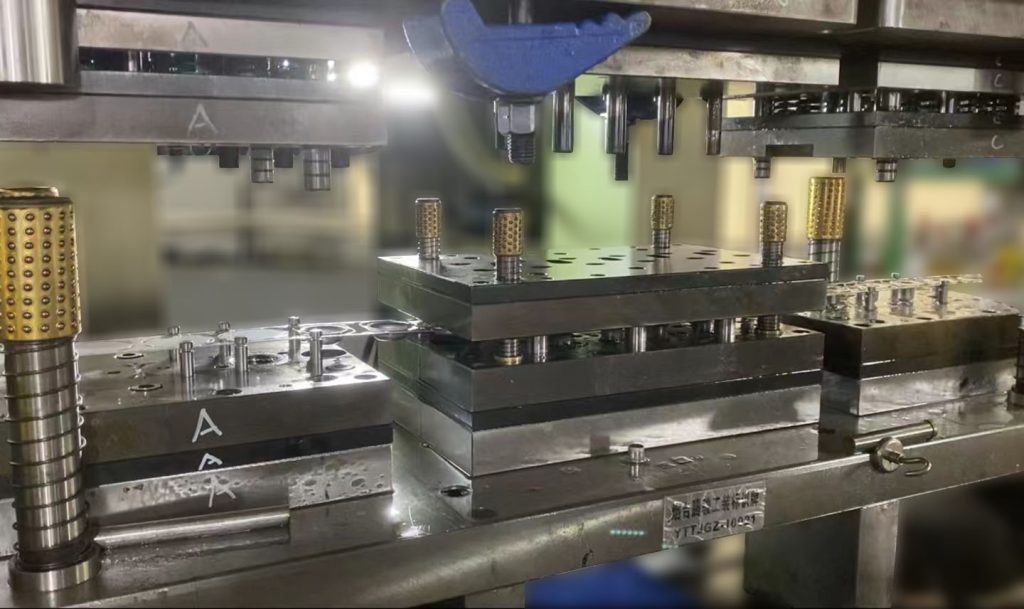
Compound Metal Stamping: A Comprehensive Guide
Compound metal stamping is a highly efficient manufacturing process used to produce complex metal parts with precision. It is a specialized form of stamping that combines multiple stamping operations into one. This process is commonly used in industries such as automotive, aerospace, electronics, and consumer goods manufacturing. By using a compound die, this method reduces production time, improves part consistency, and minimizes material waste.
What is Compound Metal Stamping?
Compound metal stamping refers to the technique of using a single die to perform multiple operations simultaneously on a metal workpiece. These operations typically include cutting, bending, and forming, all done in one stroke of the press. The key difference between compound stamping and traditional stamping is the integration of multiple steps into one cycle, reducing the need for several dies and press strokes.
The process typically involves sheet metal that is fed into a press, where a compound die performs multiple operations. As the sheet metal moves through the die, it is stamped, cut, or formed into the desired shape in one step. The result is a part that is highly accurate, produced with minimal tooling, and ready for further processing or use.
Advantages of Compound Metal Stamping
Increased Efficiency: One of the primary advantages of compound metal stamping is the efficiency it offers. By combining multiple operations into a single step, manufacturers can significantly reduce production time and cycle times, making it ideal for high-volume production runs.
Cost-Effective: Although compound dies may have higher initial costs, they reduce the need for multiple dies and tool changes. This lowers labor costs, reduces downtime, and minimizes the overall cost per part, particularly for large production runs.
Precision and Consistency: Compound metal stamping produces parts with high levels of precision. Because all operations are carried out within a single die, the parts produced are consistent and maintain tight tolerances, making it suitable for industries that demand accuracy, such as automotive and aerospace.
Material Savings: The compound die design is intended to minimize scrap, as it is optimized to maximize the use of the material. This leads to material savings and a reduction in waste, which is especially beneficial when using expensive metals like stainless steel or titanium.
Complex Parts in One Operation: Compound stamping allows manufacturers to create complex shapes in a single operation, which would otherwise require several steps or processes. This ability makes it ideal for producing intricate parts that would be difficult or costly to achieve with other manufacturing methods.
Types of Operations in Compound Metal Stamping
Punching: This operation involves using a punch to cut out shapes or holes from the metal sheet. It is commonly used for creating holes in components for fasteners or for parts that require a specific shape.
Bending: Bending is the process of forming the metal sheet into a desired angle or shape. It’s used to create parts with bends, like brackets or housings.
Blanking: This involves cutting out a blank from the metal sheet, which will be used in subsequent operations. Blanking is often the first operation in compound stamping.
Trimming: Trimming is used to remove excess material from a stamped part to ensure it meets the desired size and shape. It is often used in conjunction with other operations.
Embossing: Embossing is the process of creating raised or recessed designs in the metal surface, often used for branding or aesthetic purposes.
- Coining: Coining refers to the precision stamping process used to create a high level of detail on metal surfaces, often for markings or inscriptions.
Conclusion
Compound metal stamping is a versatile and cost-effective manufacturing process that offers numerous advantages, including high precision, material efficiency, and reduced production time. Its ability to perform multiple operations in a single press cycle makes it an ideal solution for industries such as automotive, aerospace, medical devices, and electronics. Despite the challenges, such as initial tooling costs and design complexity, compound stamping continues to be a vital technology for producing high-quality, complex metal parts at scale.
